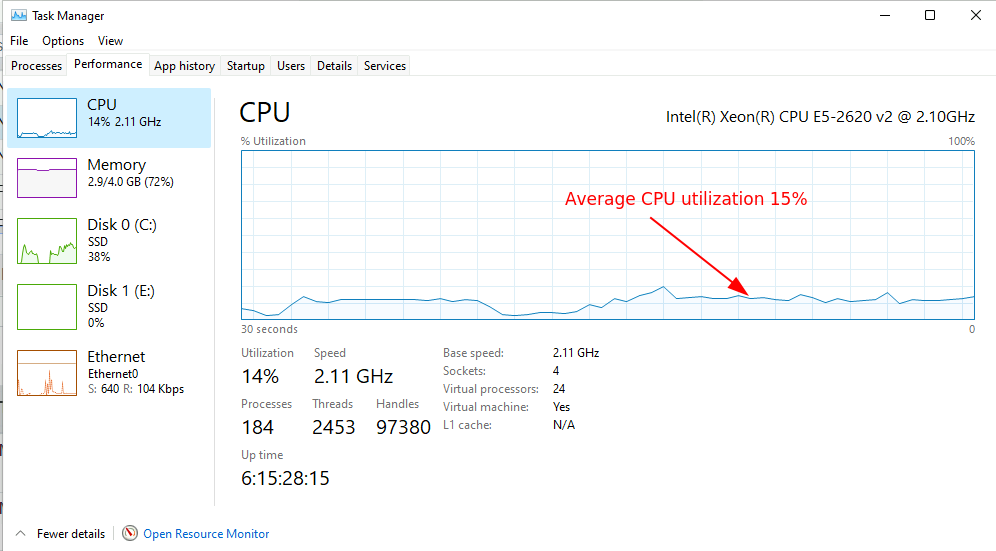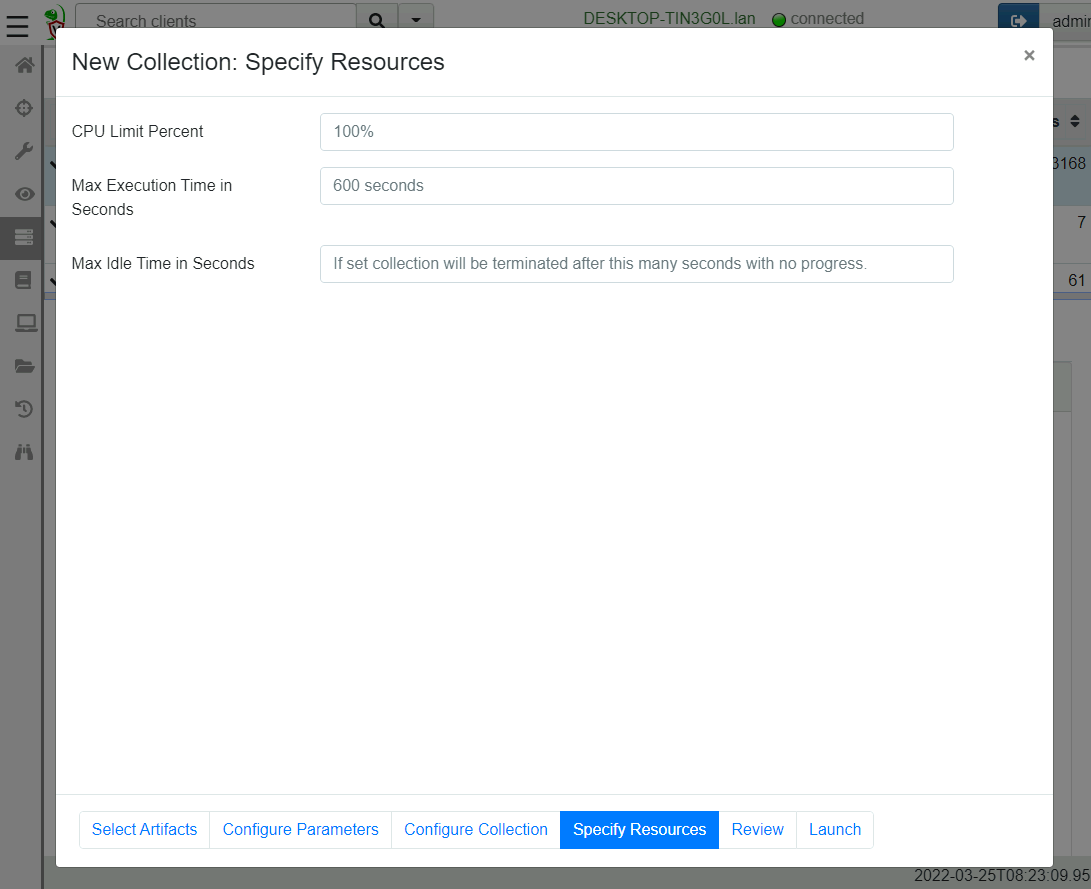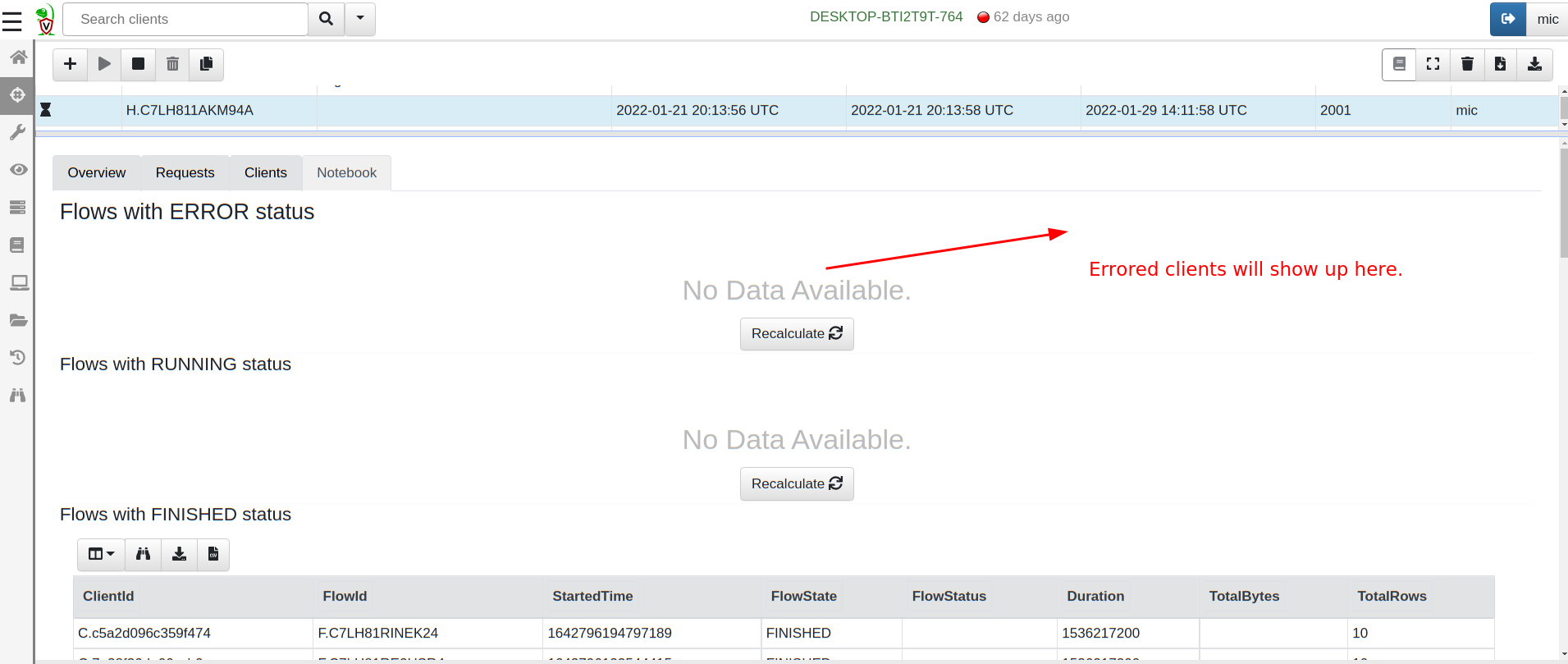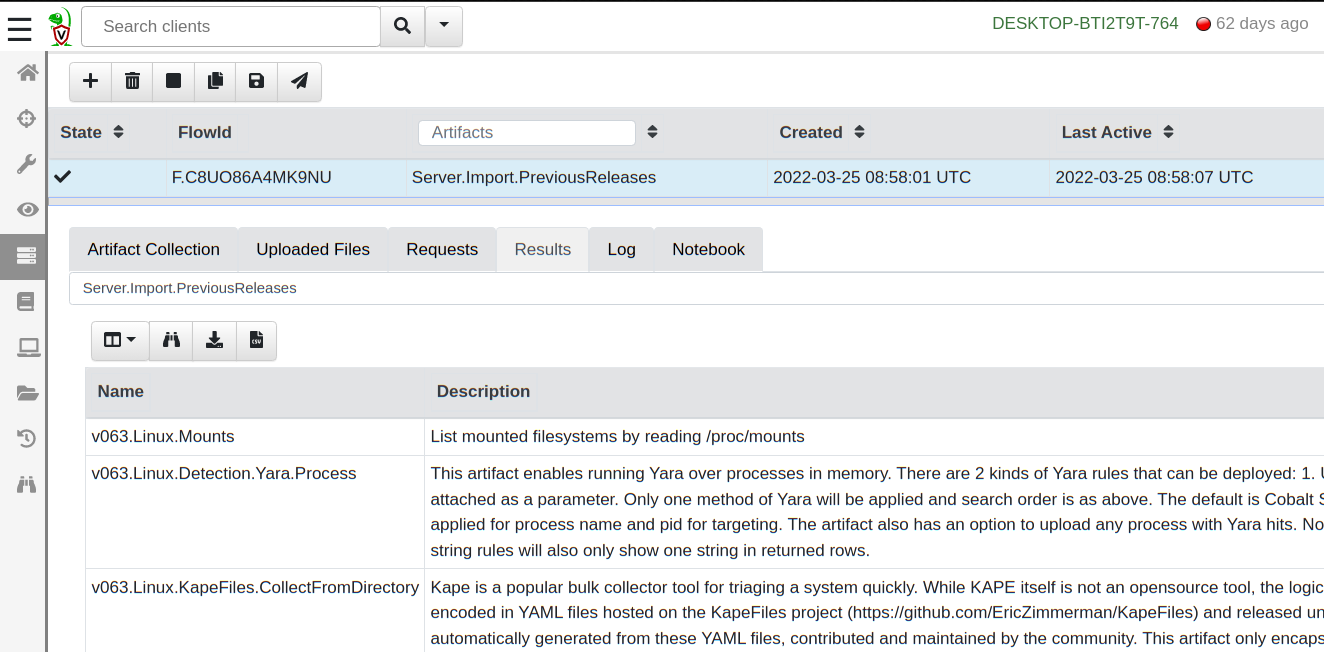Velociraptor 0.6.4 Release
I am very excited to announce the latest Velociraptor release 0.6.4. This release has been in the making for a few months now and has a lot of new features.
The main focus of this release is in improving path handling in VQL to allow for more efficient path manipulation. This leads to the ability to analyze dead disk images which depends on accurate path handling.
Path handling
A path is a simple concept - it is a string similar to /bin/ls which
can be used to pass to an OS API and have it operate on the file in
the filesystem (e.g. read/write it).
However it turns out that paths are much more complex than they first
seem. For one thing, paths have an OS dependent separator (usually /
or \). Some filesystems support path separators inside a filename
too! To read about the details check out Paths And Filesystem
Accessors
but one of the
most interesting thing with the new handling is that stacking
filesystem accessors is now possible, for example it is possible to
open a docx file inside a zip file inside an ntfs drive inside a
partition.
Dead disk analysis
Velociraptor offers top notch forensic analysis capability but it was primarily used as a live response agent. Many users have asked us if Velociraptor can be used on dead disk images. Although we rarely use dead disk images in practice, sometimes we do encounter these (e.g. in cloud investigations).
Previously we could not use Velociraptor easily on dead disk images without having to carefully tailor and modify each artifact. In the 0.6.4 release we now have the ability to emulate a live client from dead disk images. We can use this feature to run the exact same VQL artifacts that we normally do on live systems, but against a dead disk image. If you would like to read more about this new feature check out Dead Disk Forensics .
Resource control
When collecting artifacts from endpoints we need to be mindful of the overall load that collection will cost on endpoints. For performance sensitive servers, our collection can cause operational disruption. For example, running a yara scan over the entire disk would utilize a lot of IO operations and may use a lot of CPU resources. Velociraptor will then compete for these resources with the legitimate server functionality and may cause degraded performance.
Previously, Velociraptor had a setting called Ops Per Second which
could be used to run the collection “low and slow” by limiting the
rate at which notional “ops” were utilized. In reality this setting
was only ever used for Yara scans because it was hard to calculate an
appropriate setting: notional ops did not correspond to anything
measurable like CPU utilization.
In 0.6.4 we have implemented a feedback based throttler which can control VQL queries to a target average CPU utilization. Since CPU utilization is easy to measure it is a more meaningful control. The throttler actively measures the Velociraptor process’s CPU utilization and when the simple moving average (SMA) rises above the limit, the query is paused until the SMA drops below the limit.

The above screenshot shows the latest resource controls dialog. You can now set a target CPU utilization between 0 and 100%. The image below shows how that looks in the windows task manager

By reducing the allowed CPU utilization, Velociraptor will be slowed down so collections will take longer. You may need to increase the collection timeout to correspond with the extra time it takes.
Note that the CPU limit refers to a percentage of the total CPU resources available on the endpoint. So for example, if the endpoint is a 2 core cloud instance a 50% utilization refers to 1 full core. But on a 32 core server a 50% utilization is allowed to use 16 cores!
Iops limits
On some cloud resources IO operations per second (IOPS) are more important than CPU loading since cloud platforms tend to rate limit IOPS. So if Velociraptor uses many IOPS (e.g. in Yara scanning), it may affect the legitimate workload.
Velociraptor now offers limits on IOPS which may be useful for some scenarios. See for example here and here for a discussion of these limits.
The offline collector resource controls
Many people use the Velociraptor offline collector to collect artifacts from endpoints which they are unable to install a proper client/server architecture on. In previous versions there was no resource control or time limits imposed on the offline collector because it was assumed that it would be used interactively by a user.
However experience shows that many users use automated tools to push the offline collector to the endpoint (e.g. an EDR or another endpoint agent) and therefore it would be useful to provide resource controls and timeouts to control Velociraptor acquisitions. The below screenshot shows the new resource control page in the offline collector wizard.

GUI Changes
Versions 0.6.4 brings a lot of useful GUI improvements.
Notebook suggestions
Notebooks are an excellent tool for post processing and analyzing the
collected results from various artifacts. Most of the time similar
post processing queries are used for the same artifacts so it makes
sense to allow notebook templates to be defined in the artifact
definition. In this release you can define an optional suggestion in
the artifact yaml to allow a user to include certain cells when
needed.
The following screenshot shows the default suggestion for all hunt
notebooks: Hunt Progress. This cell queries all clients in a hunt
and shows the ones with errors, running and completed.


Multiple OAuth2 authenticators
Velociraptor has always had SSO support to allow strong 2 factor authentication for access to the GUI. However, previously Velociraptor only supported one OAuth2 provider at a time. Users had to choose between Google, Github, Azure or OIDC (e.g. Okta) for the authentication provider.
This limitation is problematic for some organizations who need to share access to the Velociraptor console outside their own organizations (e.g. consultants need to provide read only access to customers).
In 0.6.4 Velociraptor can be configured to support multiple SSO providers at the same time. So an organization can provide access through Okta for their own org at the same time as Azure or Google for their customers.

The Velociraptor knowledge base
Velociraptor is a very powerful tool. It’s flexibility means that it can do things that you might have never realized it can! For a while now we have been thinking about ways to make this knowledge more discoverable and easily available.
Many people ask questions on the Discord channel and learn new capabilities in Velociraptor. We want to try a similar format to help people discover what Velociraptor can do.
The Velociraptor knowledge base is a new area on the documentation site that allows anyone to submit small (1-2 paragraphs) tip about how to do a particular task. Knowledge base tips are phrased as questions to help people search for them. Tips should be short and refer to more detailed documentation - they are just a quick hint.
If you learned something about Velociraptor that you did not know before and would like to share your experience to make the next user’s journey that little bit easier, please contribute a small note to the knowledge base.
Known issues
Updating the VQL path handling in 0.6.4 introduces a new column called
OSPath (replacing the old FullPath column) which was not present
in previous versions. While we attempt to ensure that older artifacts
should continue to work on 0.6.4 clients, it is likely that the new
VQL artifacts built into 0.6.4 will not work correctly on older
versions.
If you are upgrading the Velociraptor server but still have older clients in the field, it is likely that collecting the built in artifacts will fail due to the new features not being present in older clients.
To make migration easier, 0.6.4 comes built in with the
Server.Import.PreviousReleases artifact. This server artifact will
load all the artifacts from a previous release into the server. You
can use those older versions with older clients.

Conclusions
If you like the new features, take Velociraptor for a spin ! It is a available on GitHub under an open source license. As always please file issues on the bug tracker or ask questions on our mailing list velociraptor-discuss@googlegroups.com . You can also chat with us directly on discord https://www.velocidex.com/discord .